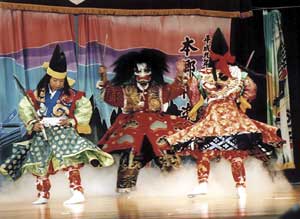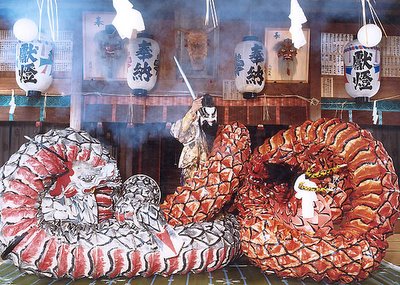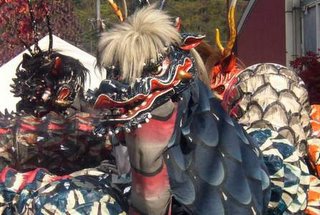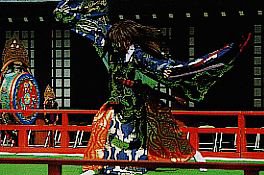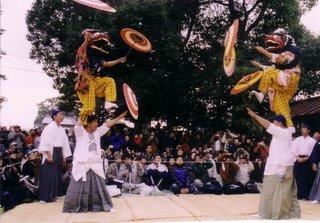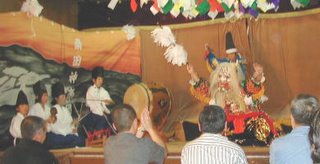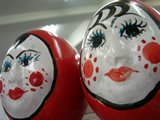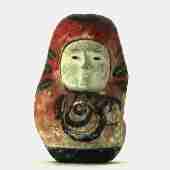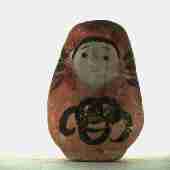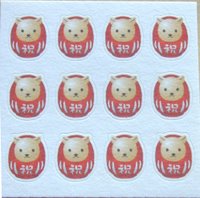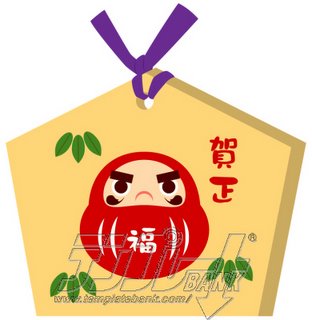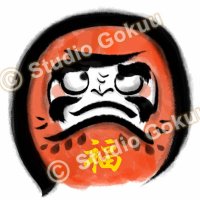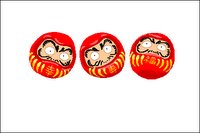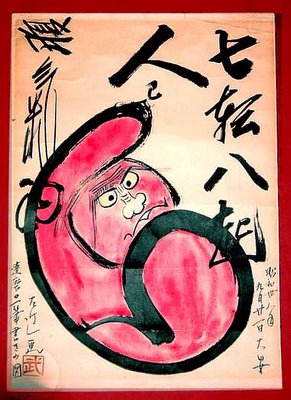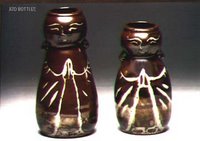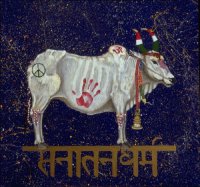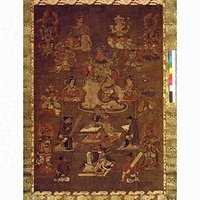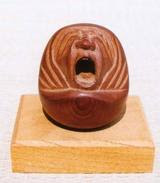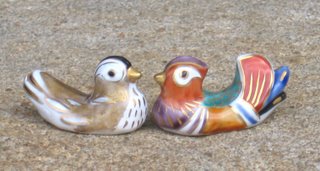:::::::::::::::::::::::::::::::::::::::::::::::::::::::::::::::::::::::::::::::::::::::::::::::::::::
Daiza, the Seat of Buddha 台座
The text below in German if from my own book.
:::::::::::::::::::::::::::::::::::::::::::::::::::::::::::::::::::::::::::::::::::::::::::::::::::::
Some samples of dias forms:
Quoted from : 仏像の基本形
Copyright© 1997-2005 仏像世界.
Takada Hiroshi
http://www.geocities.jp/butsuzo1220/index.html
Lotus Seat, Rengeza 蓮華座 (れんげざ)

xxxxxxxxxxxxxxxxxxxxxxxxxxxxx
Cloud seat, Unza 雲座 (うんざ)
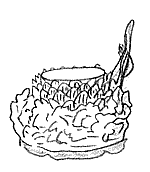
xxxxxxxxxxxxxxxxxxxxxxxxxxxxx
Seat like the Mountain of the World, Shumisen, Mt. Sumeru
Senjiza 宣字座(須弥座)(せんじざ(しゅみざ))

xxxxxxxxxxxxxxxxxxxxxxxxxxxxx
Seat like a lotus leaf, Kayooza 荷葉座 (かようざ)

xxxxxxxxxxxxxxxxxxxxxxxxxxxxx
Rock seat, Iwaza 岩座 (いわざ)

xxxxxxxxxxxxxxxxxxxxxxxxxxxxx
Honorific Seat, Diamond Seat,
Shitsushitsuza 瑟瑟座 (しつしつざ)

http://www.geocities.jp/butsuzo1220/buddha/html/bkihon.html
:::::::::::::::::::::::::::::::::::::::::::::::::::::::::::::::::::::::::::::::::::::::::::::::::::::
Whilst relying on my research book, I also add some online material now. I follow the order of the German translations.
A wonderful source apart from Mark Schumacher All about Buddha Statues is the following:
JAANUS
(C) 2001 Japanese Architecture and Art Net Users System.
http://www.aisf.or.jp/%7Ejaanus/
Check all the JAANUS links given for more information on the subject.
oooooooooooooooooooooooooooooooooooooooooo
Seat, pedestal, dias, daiza 台座
A pedestal or dais upon which a Buddhist image is placed.
The type of pedestal is related to the type of image it supports as well as the period in which it was made. The *rengeza 蓮華座 or lotus pedestal is one of the most common forms of base for Buddha and Bodhisattva images. In its simplified form it consists of a *kaeribana 反花 (a ring of lotus petals facing downward). In its complex form it has many levels and various components.
Extensive explanation is here:
http://www.aisf.or.jp/~jaanus/deta/d/daiza.htm
Seat covered with a woolen blanket, kuyuza くゆ座
Also senkuza 氈く座, kyuuza 毬座 or mousenza 毛氈座. A dais (daiza 台座) for an image of a heavenly being (ten 天) in the shape of a round woolen rug with tassels around the edge.
http://www.aisf.or.jp/~jaanus/deta/k/kuyuza.htm
Demon dias, kiza 鬼座 邪鬼・鬼座
Statues of a heavenly being (ten天) stand on the bodies of Amanojaku demons, some form of ancient Indian deities, which offer their bodies for the Buddhas to stand in more comfort.
Look at an example of Mark Schumacher
http://www.onmarkproductions.com/html/shitenno.shtml
Diamant Dias (kongooza, kongoozai; vajrasana 金剛座)
The center of the world. The original place in Bodhgaya, where Shakyamuni sat down to come to enlightenment. All Buddhas use this seat to sit in meditation until enlightenment.
One-Leaf Dias, ichiyooza 一葉座
One signle lotus leaf, in which the statue of a Kannon is seated.
See also > kayooza.
gem or precious stone base, shitsushitsuza 瑟瑟座
The most common base for an image of Fudou Myouou 不動明王, especially in a group with four others, godai myoo-o 五大明王.
See illustration above.
http://www.aisf.or.jp/~jaanus/deta/s/shitsushitsuza.htm
Robe-covered dias, mokakeza, kakemoza, senkuza 裳懸座
A pedestal which is covered by the skirt of the Buddhist image it supports.
http://www.aisf.or.jp/~jaanus/deta/m/mokakeza.htm
Stone pedestal, banjakuza, iwaza, ganza 盤石座, 岩座
images of guardian figures and Myouou 明王 most commonly have rock bases.
Sometimes figures of demons are engraved in the stone.
See illustration above.
http://www.aisf.or.jp/~jaanus/deta/i/iwaza.htm
 Podest for a figure of a saint, Honorable Seat, raibanza 礼盤座
Podest for a figure of a saint, Honorable Seat, raibanza 礼盤座Sometimes arabesques are encarved on the sides of the simple square seat.
Saint Shinran seated on a square podest
http://www5a.biglobe.ne.jp/~kenshoji/homotu/goei.html
Lotus Pedestal, rengeza; padmasana 蓮華座
the most common forms of base for Buddha and Bodhisattva images.
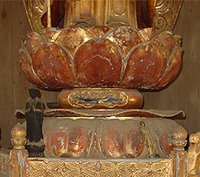
Read the details at JAANUS
http://www.aisf.or.jp/~jaanus/deta/r/rengeza.htm
Lotus-Leaf Dias, kashooza, kayooza 荷葉座
Form of an upside down lotus leaf. For statues of Ten. Often used in esoteric Buddhism. See illustration above.
Podest with a vase of treasures, hoobyoozuke rengedai 宝瓶付蓮華台
Only for Aizen Myo-O 愛染明王
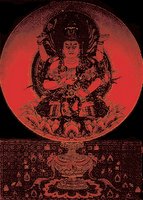
http://www.sakai.zaq.ne.jp/piicats/aizennZ.htm
lotus base with separate feet, fumiwari rengeza 踏割蓮華座, fumiwake rengeza 踏分蓮華座
Mostly for standing statues of Amida Nyorai, sometimes Fudo Myo-O.
:::::::::::::::::::::::::::::::::::::::::::::::::::::::::::::::::::::::::::::::::::::::::::::::::::::
Sockelformen (daiza)
Fast alle Figuren sitzen oder stehen auf einem besonderen Thron bzw. Sockel, der ausdrückt, daß die Gottheiten keinen direkten Kontakt mit dieser Welt haben. Am beliebtesten ist der Lotussockel, da er symbolisch das Erheben über den Schmutz und Schlamm dieser Welt verdeutlicht. Wer einmal einen Lotusteich im Sommer erlebt hat, wird diese Assoziation sicher nachempfinden können.
Bedeckter Sockel (kuyuza)
Spezieller Sockel für Ten-Statuen; mit aufgelegter Wolldecke.
Dämonensockel (kiza)
Dämonenfiguren, auf denen die Ten-Statuen stehen.
Diamantsockel (kongooza, kongoozai; vajrasana)
Der unverrückbare Mittelpunkt der Welt, Symbol der transzendenten, ewigen, diamantgleichen unzerstörbaren Wahrheit. Der Sitz, auf dem Shakyamuni under dem Bodhi-Baum meditierte und schließlich die Erleuchtung erlangte. Alle in diesem Zeitalter lebenden Buddhas erlangen auf diesem Sitz die Erleuchtung.
Ein-Blatt-Sockel (ichiyoo)
Ein einziges Lotusblatt, auf dem eine Kannon-Statue (Ichiyoo Kannon) sitzt.
Erhabener Sockel (shitsushitsuza)
"Edelsteinsitz".
Mehrstufiger, eckiger Sockel eines Myo-O. Ein fester Sockel aus mehreren, unregelmäßig geschichteten Brettern. Meist bunt bemalt. Eine abstrakte Form des Felssockels. Häufig bei einem Fudoo Myo-O, wenn er die mittlere Figur einer Gruppe der fünf großen Myo-O bildet.
Falten-Sockel (mokakeza, kakemoza, senkuza)
Sockel, über den das Gewand (mo) der Statue gebreitet ist. Meist über einem Weltenberg-Sockel. Häufig bei alten Statuen, z.B. des Shaka Nyorai im Tempel Hooryuuji. In der Fujiwara-Zeit auch für Ten-Statuen, besonders Kichijooten.
Felssockel (banjakuza, iwaza, ganza)
Sockel in Form natürlicher Felsen.
Fast ausschließlich für Myo-O, Ten oder noch niederere Gotthei~ten mit furchterregendem Gesichtsausdruck. Auf dem Stein können sich auch noch Dämonen-Figuren befinden, auf denen die Myo-O trampeln. Siehe Dämonensockel.
Heiligen-Sockel (raibanza)
Kleiner Sockel mit Arabeksen an den Seiten; für Figuren von Heiligen und Priestern
Lotussockel (rengeza; padmasana)
Massiver oder einfacher Lotussockel. Die häufigste Sockelform für Nyorai-Figuren.
Blütenschale des Erleuchtungs-, Reinheits- und Weltsymbols.
Lotus blüht im Paradies des Westens.
Für Nyorai, Bosatsu und selten Myo-O.
..... Kurze historische Entwicklung:
In der Asuka-Zeit hatte ein Lotussockel nur eine Schicht einfache Lotusblätter. In der Hakuhoo-Zeit sind die Lotusblätter walnuß~förmig, in zwei Lagen übereinander geschichtet. In der Tempyoo-Zeit werden die Enden spitz zulaufend, zu Beginn der Heian-Zeit relativ breit. In der Fujiwara-Zeit sind die Lotusblätter dünn und in der Kamakura-Zeit einfach realistisch nachgebildet.
Einzelne Teile eines klassischen Lotussockels (von oben nach unten):
Rengebu, Shibe, Renniku, Renben
Fukijiku
Uwashiki nasu
Keban
Shitashiki nasu, Ukebana
Ukeza, Kesoku
Kaeribana
Hamaguriza
Uwa kamachi
Shita kamachi
Sumiashi
..... Erläuterungen zum mehrstufigen Lotussockel:
fukijiku Gerader Teil direkt unterhalb der Lotusblätter.
kaeribana Nach oben gebogene untere Lotusblätter. Symbolisieren eine voll aufgeblüte Blüte. Darunter die beiden kamachi.
keban Zweite Plattform, auf der die Lotusblätter (renben) stehen. Symbolisieren die glatten Blätter auf dem Wasser. Sie werden vom ukeza getragen.
kesoku Lotusblätter um dem ukeza.
renben, rengebu Lotusblätter.
rennikubu Glatter Teil eines mehrstufigen Lotussockels.
shibe Staubfäden. Oberster Teil.
shitashiki nasu Kastenförmiger mittlerer Teil. Symbolisiert die Wurzeln, welche Stengel und Blüten nähren.
shita kamachi Unterer eckiger Teil des untersten Teils. Siehe uwa kamachi. Oft mit acht Ecken.
sumiashi Eckfüße.
ukeza Gerader Teil unter dem shitashiki nasu.
uwa kamachi Oberer eckiger Teil des untersten Teils. Symbolisiert zusammen mit shita kamachi das Sumpfwasser, über dem sich die Blüte erhebt. Oft mit acht oder sechs Ecken.
uwashiki nashi Kastenförmiger oberer Teil.
Lotusblatt-Sockel (kashooza, kayooza)
Kleiner Sockel in Form eines umgedrehten Lotusblattes; für Ten und niedere Gottheiten, die nicht auf einem echten Lotussockel stehen dürfen. Häufig für Daikokuten und Kichijooten. Wichtige Sockelform im esoterischen Buddhismus.
Lotus-Schatzsockel (hoobyoozuke rengedai)
Lotussockel mit einer Vase (kenbyoo, kembyoo) mit Schätzen darunter. Nur Aizen Myôô.
Lotusteich-Sockel (renga)
Eine Lotusblüte, auf der eine Kannon-Figur sitzt, aus einem Teich aufragend.
Löwensockel (shishiza; simhasana)
Symbol der erweckenden Verkündung, des unbezwingbaren Herrschertums, Mut und transzendenter Weisheit.
Oft steht auf dem Löwenrücken ein weiterer Sockel in der Form des Weltenberges Sumeru. Häufig bei Monju Bosatsu.
Siehe Tierform-Sockel.
Muschelsockel (hamaguriza, koori)
Gewölbter Teil unter dem kaeribana-Teil eines mehrstufigen Lotussockels. Auch einfacher Muschelsockel für eine Kannon-Figur.
Rechtecksockel (kataza)
Einfaches Rechteck aus Holz für eine stehende Figur.
Schritt-Sockel (fumiwariza, fumiwari renza 踏み割り座)
Zwei kleine Lotussockel unter jedem Fuß einer stehenden bzw. "laufenden" Figur. Häufig für Myo-O, selten auch bei Amida Nyorai.
Sitzplatz (kyokurokuza)
Sitz in Stuhlform für einen hohen Priester, z.B. Kooboo Daishi.
"Strahlender Berg"-Sockel (koomyoosan, koomuoozan)
Spezieller Sockel einer Wunscherfüllenden Kannon. Mit überwältigendem Wurzelwerk, bei dem der Hersteller seine Individualität ausleben kann. Eine Hand der Figur liegt stützend auf diesem Sockel, damit der "Strahlende Berg" mit dem Lotussockel nicht ins Wackeln gerät.
Tatami-Sockel (joojooza, agetatamiza)
Einfacher, flacher, viereckiger Strohmatten-Sockel mit farbiger Einfassung; für Statuen von niederen Gottheiten oder Priesterfiguren.
Tierform-Sockel (kinjuuza, choojuuza)
Wichtige Sockelform im esoterischen Buddhismus.
Elefant, Löwe, Phönix, Wasserbüffen, Gans u.a. Tiere.
Ein weißer Elefant steigt aus dem Tushita-Himmel herab, erscheint der Mutter des Shakyamuni, Maya, und kündigte ihr die Geburt des Sohnes an. Daher wird der Elefant in Indien besonders verehrt.
Elefant mit sechs Zähnen als Symbol der Stärke, Klugheit, machtvoller Würde, Unveränderlichkeit und Tugend der Meditation.
Fugen Bosatsu sitzt auf einem weißen Elefanten mit sechs Stoßzähnen. Monju Bosatsu sitzt auf einem Löwen.
Taishakuten sitzt auf einem weißen Elefanten, ein Bein herunterhängend.
Ashuku Nyorai sitzt ebenfalls auf einem weißen Elefanten.
Garuda-Vogel (kinshichoo), bedeutet Sieg über alle Elemente. Fukuu Jooju Nyorai sitzt darauf.
Pfau bedeutet Schönheit und macht Giftstoffe unwirksam. Kujaku Myo-O reitet auf einem Pfau.
Daijizaiten sitzt auf einem Wasserbüffel.
Die meisten Figuren sitzen auf einem Lotussockel auf dem Rücken des entsprechenden Tieres, z.B. auf einem Elefanten (kizoozoo), auf einem Löwen (shishiza, kishizoo).
Ausnahmen:
Dakiniten sitzt direkt auf einem weißen Fuchs.
Emmaten manchmal auf einem Wasserbüffel.
Marishiten steht auf einem Wildschwein.
Myooken Bosatsu und der Wassergott stehen auf einem grünen Drachen oder einer Schildkröte.
Wolkensockel (unza, kumoza)
Wolkenförmiger Sockel für engelartige Himmelswesen (gandharva; Apsara). Häufig in Fujiwara- und Kamakura-Zeit; besonders schöne Versionen im Tempel Byoodooin.
Weltenberg-Sockel (shumiza, sumiza, senjiza)
Sockel als Verkörperung des Weltenberges Sumeru. Sockel eines Nyorai oder Bosatsu, viereckig oder achteckig. Ein mittlerer Block wird oben und unten von einem Brett abgedeckt, sieht ähnlich aus wie das chinesische Zeichen "sen", daher der Name "Sockel wie das chinesische Schriftzeichen SEN" (senjiza). Unten meist mit drei Stufen. Manchmal fließen die Gewänder über den vorderen Teil dieses Sockels (siehe Faltensockel).
Wellensockel (suhamaza)
Sockel wie eine Sandbank.
Sockel einer stehenden Figur; mehrere Schichten wie Wellen an einer Küste. Eine Art der Felsensockel. Häufig in der Tempyoo-Zeit für niedere Gottheiten.
Quoted from my book:
Greve, Gabriele
Buddhastatuen - Who is Who
Paradise Publishers, Kamakura 1994
Japanese Art and Culture: Literature by Gabi Greve
. Buddhistische Kultgegenstände Japans
by Gabi Greve
Paradise Publishers 1996.
:::::::::::::::::::::::::::::::::::::::::::::::::::::::::::::::::::::::::::::::::::::::::::::::::::::
worldkigo
